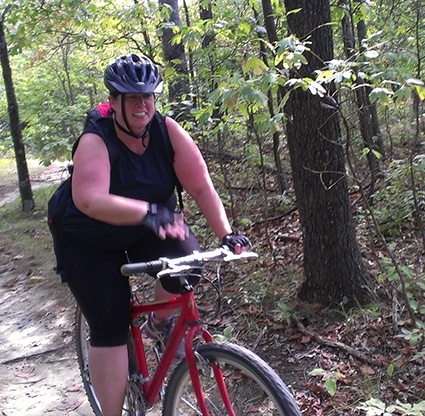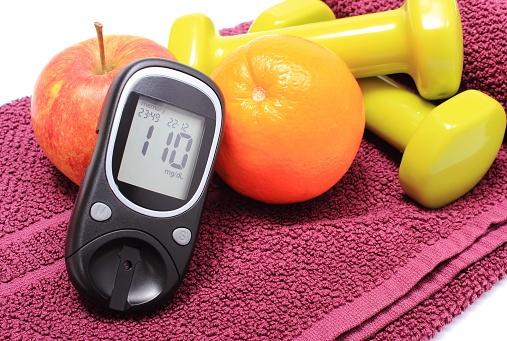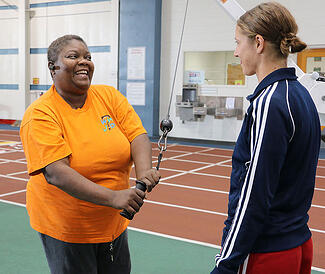 Has a physician or other healthcare provider recently told you to improve your diet and exercise? If you are like most Americans, there is also a pretty good chance that you have a stressful lifestyle that leaves you short on the time, money, and energy it takes to implement these changes. Besides, other than a few extra pounds, you haven’t really noticed any changes to your body, right?
Has a physician or other healthcare provider recently told you to improve your diet and exercise? If you are like most Americans, there is also a pretty good chance that you have a stressful lifestyle that leaves you short on the time, money, and energy it takes to implement these changes. Besides, other than a few extra pounds, you haven’t really noticed any changes to your body, right?
I’m here to tell you that your body is changing, and the quicker you make a change, the better.
Are You at Risk for Chronic Disease?
In 2017, the Centers for Disease Control and Prevention (CDC) released data on deaths and mortality. The 15 leading causes of death included several chronic diseases that are defined by the CDC as, “Conditions that last 1 year or more and require ongoing medical attention or limit activities of daily living or both.” Those on the list included the following:
- Heart disease (1st)
- Chronic lower respiratory diseases (4th)
- Stroke (5th)
- Diabetes mellitus (7th)
- Kidney disease (9th)
- Liver disease (11th)
- hypertension (13th)
Combined, these diseases accounted for 41.5% of deaths in 2017. When other chronic and mental health conditions are added in, they account for a staggering 90 percent of annual health care costs. The one thing these conditions have in common? They can all be treated with proper nutrition and physical activity.
Individuals who participate in key risk behaviors like tobacco use, poor nutrition, excessive alcohol consumption, and lack of physical activity or more likely to develop these diseases. In some cases, we have no control over whether we develop these diseases, but we can mitigate the risk by eating healthier and participating in more physical activity.
How to Make the Change Toward Healthy Living
If you are interested in making a change, first get screened by a licensed healthcare professional to discuss your current lifestyle as well as your personal and family medical history. It is important that you speak with a doctor prior to engaging in any exercise program. In addition, I recommend consulting with a Registered Dietitian (RD) to discuss your personal dietary needs.
Finally, join me through this monthly blog mini-series, The Impact of Exercise on Chronic Disease, as I detail how exercise improves the quality of life for individuals with a major chronic disease.
This blog was written by Brandon Wind, ACSM Certified Exercise Physiologist and Healthy Lifestyle Coordinator. To find out more about the NIFS bloggers, click here.


 There is no escaping the colors of the sugary candy that is around every corner. From jelly beans to chocolate bunnies and Cadbury eggs, the temptations are endless and the calories are empty.
There is no escaping the colors of the sugary candy that is around every corner. From jelly beans to chocolate bunnies and Cadbury eggs, the temptations are endless and the calories are empty. It’s Halloween time, and that can only mean one thing: sugar, lots of sugar! Toward the end of summer, stores start to taunt us by placing all of the Halloween candy out on display. What’s worst of all is that the candy is in tiny, easy-to-eat servings. By the time the actual day of Halloween rolls around, we’ve already been thumbing through fun-sized candy the entire month.
It’s Halloween time, and that can only mean one thing: sugar, lots of sugar! Toward the end of summer, stores start to taunt us by placing all of the Halloween candy out on display. What’s worst of all is that the candy is in tiny, easy-to-eat servings. By the time the actual day of Halloween rolls around, we’ve already been thumbing through fun-sized candy the entire month. Most of us are aware that the number of Americans diagnosed with diabetes is increasing, but so is the number of us at risk.
Most of us are aware that the number of Americans diagnosed with diabetes is increasing, but so is the number of us at risk.  Technology can be incredibly
Technology can be incredibly  There comes a time when a story of struggle, strife, and success must be shared to remind others that you are never alone in your battle, and that achievement and happiness are closer than you may think. Katie Feltman has such a story.
There comes a time when a story of struggle, strife, and success must be shared to remind others that you are never alone in your battle, and that achievement and happiness are closer than you may think. Katie Feltman has such a story.  You’d think with the scary words the doctor was saying I would have walked out of there that day and taken charge of things right then. But change isn’t like that—not for me, at least. I was frustrated with how I felt, and I know this will sound superficial but it is true: I hated how I looked, which I didn’t realize then but now know was key to my struggle. Self-hate = no self care, and that was how I was living my life. I was living life in a muted capacity, and I lacked the motivation to do something about it—any of it.
You’d think with the scary words the doctor was saying I would have walked out of there that day and taken charge of things right then. But change isn’t like that—not for me, at least. I was frustrated with how I felt, and I know this will sound superficial but it is true: I hated how I looked, which I didn’t realize then but now know was key to my struggle. Self-hate = no self care, and that was how I was living my life. I was living life in a muted capacity, and I lacked the motivation to do something about it—any of it.


 I’d like to take a few moments to highlight a member of the NIFS Lifestyle Program. This program provides extra guidance and observation to individuals with chronic medical concerns. NIFS’s Lifestyle Coordinator communicates with the participant’s physician about their progress and helps them plan workouts geared to their specific medical needs. Take a few minutes to read about Kim Flowers and learn how this program has changed her.
I’d like to take a few moments to highlight a member of the NIFS Lifestyle Program. This program provides extra guidance and observation to individuals with chronic medical concerns. NIFS’s Lifestyle Coordinator communicates with the participant’s physician about their progress and helps them plan workouts geared to their specific medical needs. Take a few minutes to read about Kim Flowers and learn how this program has changed her.
 6th annual Lifestyle Program Silent Auction.
6th annual Lifestyle Program Silent Auction. my morning by getting up and exercising, which helps me to feel good throughout the day.”
my morning by getting up and exercising, which helps me to feel good throughout the day.” 

